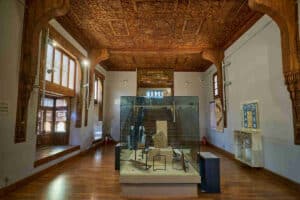History buffs know that back in the 11th and 12th centuries, the Middle East was marked by the confrontation between Christian crusaders and Muslim sultans. The former were driven by the papacy and commanded by a warrior elite coming from Western Europe, and had the objective of conquering and protecting Jerusalem, as well as the tomb of Christ. The latter represented different kingdoms but with prevalence of the Ayyubid dynasty that, in one way or another, had control of the Holy Land and other places considered sacred to Christianity. That confrontation left an important mark on what is now Israel, but did the Crusaders also leave their mark in Egypt? In this post we will find out.
Presence but (almost?) no vestige
The Christian crusaders came to enter the territory of what is now Egypt, not directly from Europe, but from the Kingdom of Jerusalem, which had been created in 1099. Later, it was Amalric I king of Jerusalem who took the initiative, taking advantage of the weakness of the Fatimid caliphate, which was already in the death throes of its rule.
In total there are four campaigns between 1163 and 1169, considered invasions, although the Crusaders did not exercise significant control over the Egyptian territories through which they passed. In the third, the Crusader troops came so close to taking Cairo that they even initiated the construction of a bridge over the Nile and withdrew from the Lower Nile after an agreement favorable to their interests.
The last of these invasions was a siege and landing at Damietta, which on the one hand resulted in a failure of these enterprises and, on the other, and in the rise and confirmation of the warlord called to rule Egypt in the following decades: Saladin.
Other crusades, such as the fifth (1213-1221) had as their objective the partial or total conquest of Egypt. Again, Damietta was targeted for siege and landing, advancing as far as Cairo, but the Christian armies (in this case from Hungary, Austria and other European territories) were forced to retreat and desist.
Beyond these years of hostilities, one can hardly speak of crusaders in Egypt. An exception could be, perhaps, the castle of Pharaoh’s Island, in the waters of the Gulf of Aqaba, off the coast of Jordan. In that fortress the hand of the crusaders has been wanted to be seen, probably prior to the mentioned invasions, in the time of King Baldwin I (1116), but no archaeological evidence of this has appeared. It is also believed that Saladin himself, in 1170, took the fortress and ordered to expand it, although the appearance it has today is probably due to interventions in later centuries.
Other Crusader-related sites in Egypt
Although the Crusaders left hardly any remains in the form of buildings or monuments, it can be said that the threat posed by their presence in the Holy Land and their incursions into Egypt provoked the alert and activation of their enemies, in the form of defensive military structures.
The most significant of all the defensive constructions created to resist and repel the Crusaders is, precisely, the Citadel of Saladinerected on top of the Mokattam hills by the aforementioned sultan and his Ayyubid successors at the end of the 12th century. A strategic and perfect position for the surveillance of Cairo, later consolidated and expanded by the Mamluk sultans and even the Vallies in times of the Ottoman Empire.
In short: although Egypt was a strategic place for crusaders and Ayyubids, the current vestiges are almost nonexistent, although surely with imagination and a little literature, the battles fought here in the late twelfth and early thirteenth centuries will remain relevant in the minds of many travelers.




